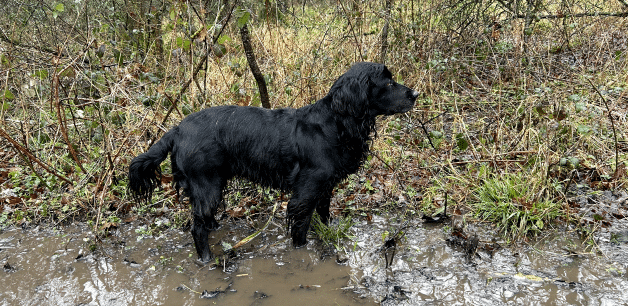What is Alabama rot?
You may have heard or seen the term ‘Alabama rot’ in recent years. Alabama rot is an uncommon, but life threatening infection that affects dogs. Although it has only affected ten dogs in the UK this year, its severity gives enough cause to take note of how to identify it, should your dog show symptoms.
The disease causes visible lesions on the skin, which can lead to severe organ failure and kidney disease in a very short amount of time. Unfortunately, many cases often prove fatal. Initial symptoms can include:
-
Loss of appetite
-
Lethargy
-
Red, swollen skin patches
-
Excessive thirst
-
Vomiting
It’s important to note that there are several other conditions that can present the same symptoms as Alabama rot disease. However, the infection progresses very quickly, and unfortunately, once the skin lesions appear, the disease is in its late stages, which can often be fatal.

What causes it?
The cause of Alabama rot is a mystery to vets and scientists around the globe. There is currently no evidence to suggest that the infection is contagious. Some believe it might be caught via drinking in the outdoors, yet there’s also no evidence to prove this either.
It’s suspected by scientists and vets that the disease might spread from muddy outdoor areas, especially during the wetter months. This is because a large proportion of recorded affected dogs were diagnosed after a muddy walk in the woods.
How is Alabama rot treated?
Unfortunately, Alabama rot causes severe kidney failure, which there is no current cure for. Treatments to fight the disease often include specialist skin coverings for the lesions, intravenous fluids and close monitoring of the dog at the vets.
That said, in August 2018, the Royal Veterinary College announced a new, pioneering treatment called Plasmapherisis. It involves taking blood from the patient, filtering it to remove toxins before they’re able to damage the kidneys and other organs further, and returning the filtered blood back into the dog’s body. Out of 6 affected dogs that received this treatment, 2 made a full recovery, which made it the first time that a severely affected dog had survived the disease.

How can I protect my dog from Alabama rot?
Because the cause is unknown, there are also no known preventative measures against Alabama rot disease.
However, it’s currently recommended to always wash your dog down well after a muddy walk, especially if the walk was in a woodland area.
You can track the number of cases recorded on this live map. This is a great way to avoid dog walks in areas where there have been recent recorded cases of Alabama rot.

Do not fear!
As scary as Alabama rot sounds, the reported number of cases in the UK is very low. Thousands of dogs are walked in the countryside every single day, and yet only a small number of dogs are affected. Research is ongoing to determine the cause of Alabama rot, and new breakthrough veterinary treatments are allowing affected dogs a much more positive prognosis than ever before.
As always, I’d love to hear your thoughts on this blog! Please feel free to reach out to me at james@ella.co if there’s anything you’d like to discuss, I’m all ears!
James x
